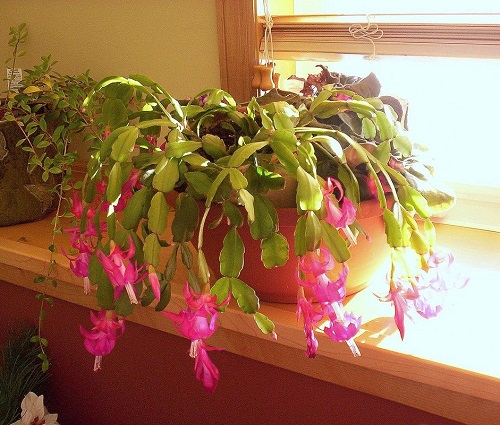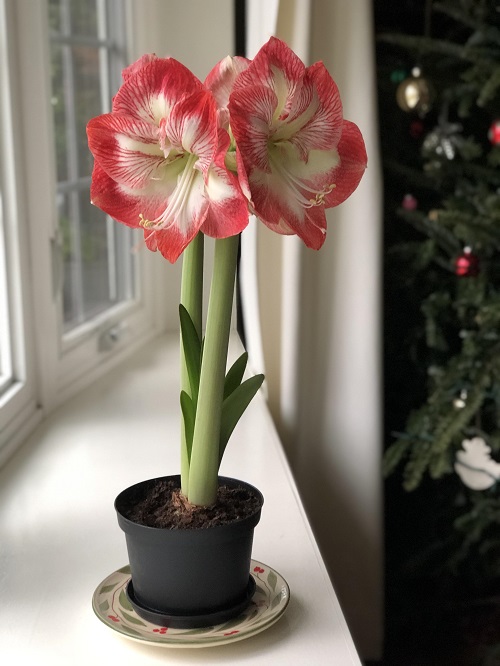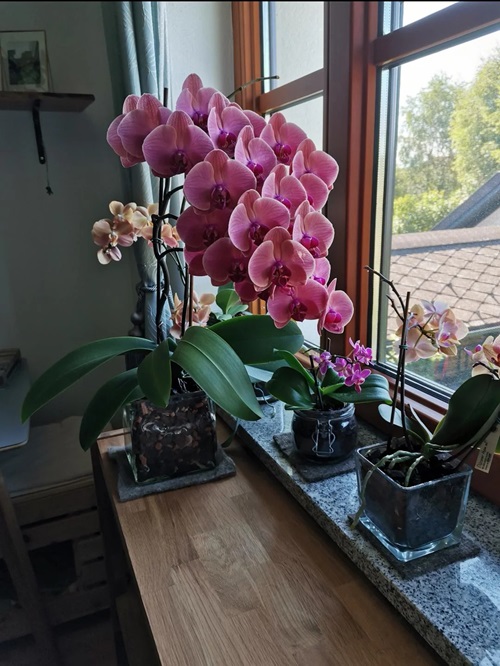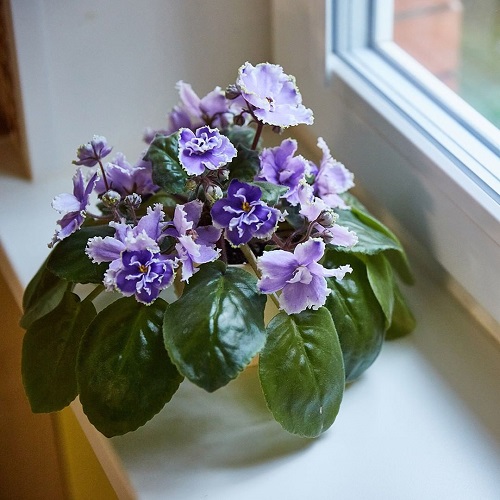Does your home get too bleak in cold weather? Grow these Winter Flowering Plants on a Windowsill and give it a magical makeover!
As your summer and fall blooms perish, it’s time to upgrade! And what better way to face the chilly gloom of winter than to host these evergreens and cool-season blooms in your home? Here are the best winter flowering plants to grow on a windowsill!
Winter Flowering Plants to Grow on a Windowsill
1. Cyclamen
Botanical Name: Cyclamen persicum
USDA Zone: 4-11
Cyclamen is a compact winter bloomer with butterfly-shaped pink, red, and white flowers. Slightly resembling tulips and crocuses, this perennial grows from tubers and reaches about 6-8 inches in height, making it perfect for windowsills and tiny planters.
It also sports showy heart-shaped foliage with marbled patterns running through each leaf. This flowering plant is super easy to grow and needs an average temperature of about 65 F and well-draining soil.
Avoid watering the plant from the crown to prevent rotting. Wait until the soil surface dries out between watering spells. Here’s how to keep cyclamens blooming all through winter.
2. Amaryllis
Botanical Name: Hippeastrum
USDA Zone: 7-10
Amaryllis is perfect for giving your home a tropical makeover in the peak of winter! Its upright growth habit of up to two feet is complemented by large, patterned, single, or double-layered blooms in peach, pink, burgundy, and white.
This stunning flowering bulb needs a spacious and sunny spot. Plant it in moist, rich organic soil and place it by a south-facing windowsill.
Note: This plant needs a dormant or resting period before it blooms, so keep it in a dark and cool room for at least eight weeks before triggering it to bloom.
3. Christmas Cactus

Botanical Name: Schlumbergera spp.
USDA Zone: 9-11
Christmas cactus is a holiday favorite! Every season, you’ll find florists and supermarkets lined with its drooping, tubular pink to scarlet flowers and cascading green segmented stems. But instead of buying a new one, there are several tricks to make your Schlumbergera bloom right before Christmas into January!
This succulent epiphyte thrives on an east-facing windowsill with ample bright, filtered sunshine and humidity—often scarce during winter. The best way is to use a humidifier to keep it moist. And pick a potting mix with peat moss, perlite, coarse sand, or loam.
4. Daffodils

Botanical Name: Narcissus
USDA Zone: 4-8
There’s nothing quite as romantic on a mellow winter morning as the sight of sunny yellow star-shaped daffodils swaying on a windowsill! Daffodils are perfect cold-weather companions thanks to their easy-growing attitude, cheery disposition, and compact size.
Pick a spot with full sun, as these winter blooms follow the sun’s movement like sunflowers. They’ll thrive on a sunny, south-facing windowsill and well-draining acidic soil. And daffodils don’t need much water to survive, so you can afford to get a little lazy with them!
5. Moth Orchid
Botanical Name: Phalaenopsis
USDA Zone: 9-12
Moth Orchids look like moths, hence the name! These insect-mimicking pretty blooms emerge in winter year after year. They are tropical perennials native to Asia and northeast Australia but can be grown anywhere as long as all their needs are met.
Place them on a warm, east-facing windowsill to highlight their showy, colorful, and large (3-6 inches) blooms. They need high humidity but average watering.
Did you know that the roots of this plant also possess chlorophyll and can, hence, photosynthesize through them? You can use a see-through transparent container for maximum efficiency. And check out this article to make your orchid blooms last forever!
6. African Violet
Botanical Name: Streptocarpus ionanthus
USDA Zone: 11-12
This tropical evergreen plant can bloom indoors throughout the year. Its flowers have water-soluble anthocyanin pigments, which are often used in making natural dyes. Like hydrangeas, these blooms can change color depending on the soil’s pH.
With foliage emerging as fuzzy rosettes, this plant rarely grows outdoors. It prefers bright indirect sunlight, consistent moisture, and warm indoor temperatures (60-80 F). Pick a sunny windowsill and plant it in window boxes, planters, or cool looking baskets.






